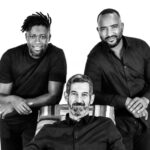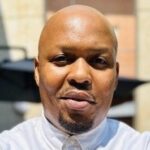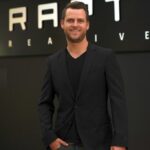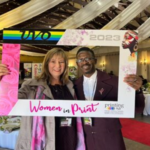 by Mike Abel, Founding Partner & Chief Executive at M&C Saatchi Abel
by Mike Abel, Founding Partner & Chief Executive at M&C Saatchi Abel

Ask me whether the economic value of creativity has been historically undervalued in South Africa, and I’ll say: Yes. Enormously so. A recent Business Times article published on 12 March 2017 even highlighted the extent to which South Africa’s creative agencies and creative professionals are overlooked with regard to their economic value.
Look at the fact that the “total contribution of entities and organisations within the creative industries sector is between R90 billion and R107 billion in direct output (turnover) per annum”, and you’ll begin to see that creativity unlocks business performance.
But how? How can creativity change the world via economic – or social – value?
Back to basics
Good creative agencies understand how to get a customer to buy their client’s product rather than someone else’s. If this isn’t a CEO’s greatest concern, I don’t know what is. But the problem is, so many companies look to advertising agencies only to ‘make ads’, which is like using a Swiss Army Knife only for the corkscrew.
Companies should remember that advertising agencies, at their core, are problem-solvers. Commercial psychologists, if you will. Our job is to shift perception and to create demand for a product, service and brand. The first law of economics talks to supply and demand, and we can create that demand by leveraging product innovation and then building relevance, consideration, re-appraisal and ‘loyalty’.
Spurring growth
Way back when, Volkswagen briefed its agency, Rightford, Searle-Tripp & Makin, to develop a brand called the Econo Golf. The agency, where I later worked for many years, didn’t come up with just an advertising solution, but an entirely new idea.
We re-branded the old shape as the ‘Citi Golf’ in three bright primary colours and launched it as the antidote to humdrum, promising drivers that they’d “Get the freedom of the Citi”. This paint job, together with minor trim adjustments, allowed the Citi Golf to dominate its category for 24 years, selling over R13 billion in cars. Think of the jobs created by R13 billion in sales, just based on this one idea.
Building networks
Years later, when we were launching takealot.com at M&C Saatchi Abel, we realised that the brand needed a powerful distribution solution, so we introduced takealot to Mr Delivery. The drivers were busy over meal times, but had huge capacity outside of those hours to deliver takkies, TVs, books and other items. It didn’t take long for takealot to acquire Mr Delivery and the rest, as they say, is history. That’s the value of a creative idea.
Doing good
When I sat on the Ogilvy Global brains trust, we were asked to define a new central organising thought for the Group. This was our belief that brands don’t only need to grow off a Big Idea, but also off a Big Ideal: something that can change the world.
The work we had done on Dove, out of Canada, inspired us. Dove as a brand came to stand not just for the extra-moisturising properties that could be found in soap, but also for the celebration of natural, uncontrived beauty. This brand ideal had a profound psychological effect on how women across the world felt about themselves.
Locally, the M&C Saatchi Abel concept of the Street Store shows how it’s possible to tackle society’s more urgent challenges. We created the world’s first rent-free, premises-free, free pop-up clothing ‘store’ for the homeless – using four posters and an open-source website: thestreetstore.org.
This emerged from the simple idea of providing the homeless with a genuine (free) shopping experience, to bring dignity to receivers and fufilment to givers. Today, almost every day, a Street Store happens somewhere in the world, clothing many hundreds of thousands of homeless individuals.
Provoking ‘crazy’
I believe that the ad industry has done itself a disservice by focusing on ‘award-winning opportunities’ rather than on solving hard problems in brilliantly creative ways. (In fairness, though, many clients are fearful of truly imaginative solutions.)
Look at the Dumb-Ways-To-Die campaign, which did far more for raising awareness of railway safety than any serious message could have. Locally, look at the Hollard DareDevil Run, where men run a race in tiny purple Speedos, to show their support of testicular cancer. The secret is in entertainment and in being brave.
Is there a country we could emulate with regard to harnessing creativity for economic/social good? Absolutely. I’m sure there are many. But South Africa doesn’t have to look further than South Africa. We have world-class talent here.
About the author
Mike Abel is recognized as one of South Africa’s leading advertising and communications leaders. He has co-led the largest communications group on the African continent, Ogilvy South Africa, he ran the giant M&C SAATCHI Group, Australia and most recently, in February 2010 founded M&C SAATCHI ABEL, which to date, is credited with being the fastest growing advertising agency in the history of South Africa. The agency, from start-up, exceeded a R100m in gross profit p.a. within three years of opening and in 2015 was named Agency of the Year by the Financial Mail, just five years after opening its doors.
The M&C Saatchi Group on the African continent, now comprises M&C Saatchi Abel, Creative Spark, M&C Saatchi Connect, M&C Saatchi Africa, Dalmation Advertising and Avatar.
- MRF Unveils Latest MAPS® Data - 20th February 2025
- The BRC announces changes to the board and updates for 2025 - 17th December 2024
- Top 50 DSTV TV programmes – October 2024 - 12th November 2024





